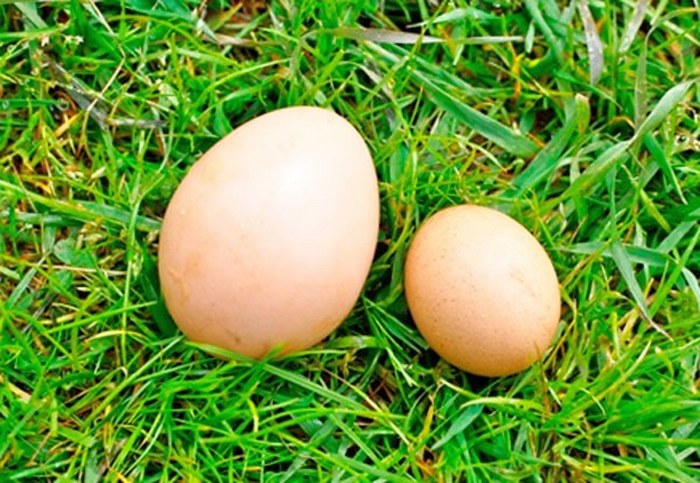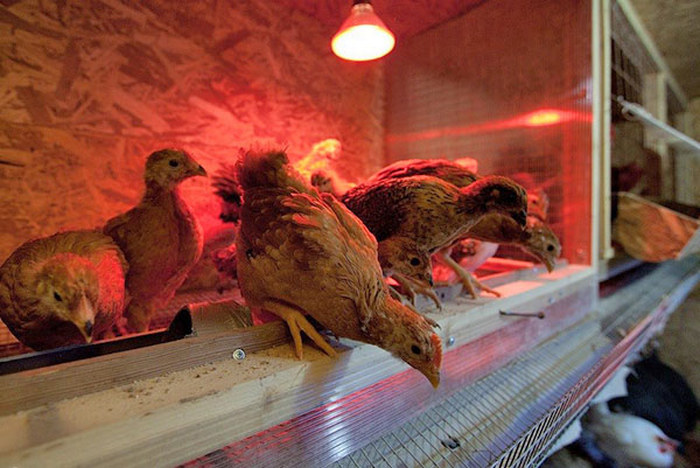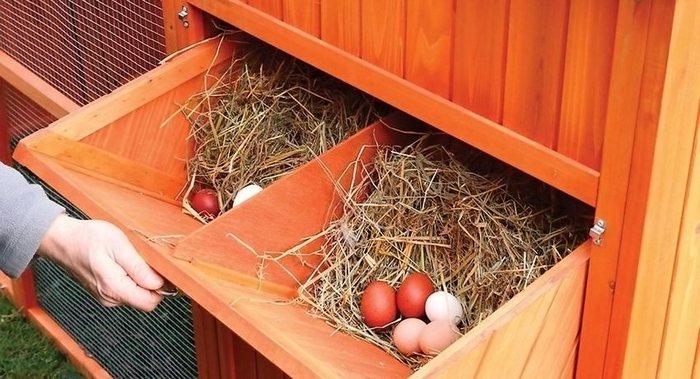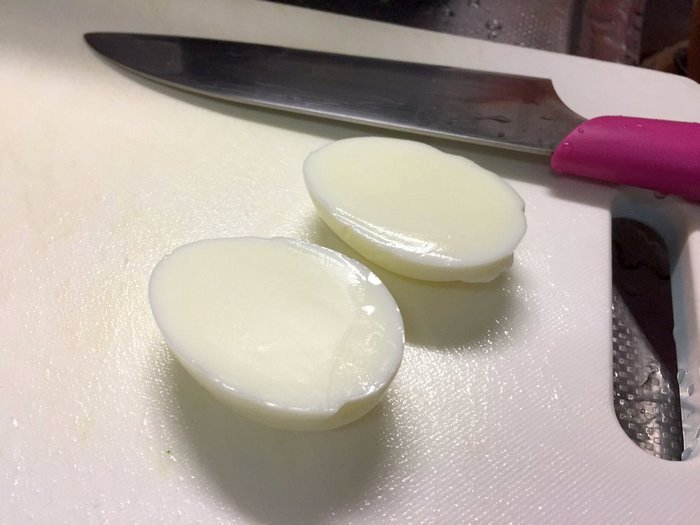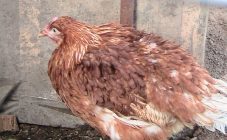Content:
Domesticated chickens are bred for meat or eggs. Laying hens should be kept on the farm to get fresh eggs on a regular basis.
Layers are characterized by a low body weight and a large number of feathers. Eggs begin to lay at about four months of age. When 20 days have passed after the first egg laid, the hen becomes an adult.
Before starting a laying hen on the farm, you should understand the intricacies of various breeds. The choice of chicken is determined by the egg production. The breeds have proven themselves well: Czech golden, Minork, Kuchin jubilee. Among the hybrid crosses, I note the breeds Zarya 17, Borki 1 and 2 and others.
When choosing young individuals, they look at the appearance of the birds. The good condition of the young is determined by the following criteria:
- the chest should be flat;
- strong paws;
- bulging eyes, not tearful;
- plumage is clean and shiny;
- the comb is bright;
- weight at a productive age is at least 1.5 kg;
- the individual is mobile.
Keeping chickens in cages and walking
Keeping chickens in cages assumes no walking. Up to 8 heads can be marked on one square meter. The cages are constructed from a fine mesh. Provides additional lighting. The advantages of this method: if there is a two-level bottom in the cages, cleaning is done 1-2 times a month. Lack of cellular content: high investment.
Keeping chickens with the possibility of walking assumes the presence of separate areas for sleeping and walking. A spacious, bright room is chosen or built for the chicken coop. It should be located on a hill to avoid flooding. The ceilings are made about two meters high.
The chicken coop must be equipped with:
- feeder;
- drinker;
- roosts;
- nests.
The material for the floor is chosen from wood or clay concrete. Lay straw, sawdust or hay on the floor.
Layers must be provided with daylight up to 17 hours a day. In winter with short daylight hours, additional lamps are installed.
The temperature in the chicken coop should be at least +15 degrees, especially in winter. The optimum temperature is +25 degrees.
To provide the chicken coop with good ventilation, you should equip vents or exhaust pipes. The advantage of flue pipes is that they provide fresh air to the house without allowing the room to cool down. For the equipment of perches, wooden beams are used, located at a height of one meter. One individual occupies about 20 cm of the perch.
The nests are installed further from the window. You can use a wooden box or cardboard boxes to create a nest. The size of the nest should be at least 30 * 30 * 35 cm. The nest should be filled with litter, the same as in the entire chicken coop.
A fenced paddock is organized for walking. The height of the fence is at least 1 meter. You can also make a canopy that will protect against attacks by predators.
Long boxes are suitable as feeders.The length is determined at the rate of 20 cm per bird. The feeders should not be placed high so that the chickens cannot climb in and rake the feed. Drinkers should always have clean, fresh water.
Layers ration
Chicken nutrition should be rich and varied. The diet includes proteins, fats, carbohydrates and vitamin complexes.
- Proteins help build the chicken's body and are the basis of eggs. Legumes, bone meal, cake are rich in protein.
- Fats are found in oats and corn kernels. They provide the hens with energy.
- Carbohydrates are essential for the functioning of internal organs. Succulent feed rich in carbohydrates.
- Chickens can get fiber from unrefined grains.
- It is important to include vitamins A, B and D in the diet of chickens. Mineral components are added in the form of bone meal, chalk and wood ash.
To feed the hens, you can use compound feed or prepare the mixture yourself.
In the compound feed, the ratio of the necessary substances for the rational nutrition of layers is taken into account. Self-preparation of feed reduces the cost of purchasing it, but increases the time spent on preparing the mixture, requires certain knowledge and skills.
For daily feeding, hens include in the diet 50 g of grain, 2 g of bone meal, 40 g of flour mixture, 15 g of vitamin and mineral complexes. You also need to add a small amount of protein feed and mash.
Layers do not require complex care. The main requirement is proper timely feeding of birds, regular cleaning of the chicken coop and disinfection.
Interruptions in egg production
Various factors can lead to a deterioration in egg production:
- unbalanced diet,
- poor diet
- binge eating.
The most frequently asked question from egg farmers is why chickens lay small eggs, the reason and what to do. You should be aware that the approximate standard of an egg is 65-70 g. When looking for the reason why a hen laid a small egg, you should take into account the age, breed and possible diseases of the laying hen.
Reasons for the appearance of small eggs:
- features of a particular breed;
- early age of a young individual;
- foreign object in the chicken oviduct;
- inflammation of internal organs;
- hormonal changes.
When purchasing pullets, you should pay attention to the characteristics of the breed. Many varieties have a standard appearance, but the eggs will be tiny. Also recently, dwarf chicken breeds have become popular, despite the fact that their eggs resemble quail eggs. The advantages of dwarf species: compact arrangement per square meter and low feed costs.
The age-related reason lies in the early onset of lay. Usually, puberty begins between 20 and 22 weeks of age. In hybrid breeds or chickens with an egg direction, this period can begin as early as 17 weeks. The fineness of the carried product is explained by the fact that the egg has a full-fledged yolk and a thin protein layer. Over time, the oviduct expands and the egg takes on a standard size.
When a foreign body, such as a feather, a stone, or a piece of litter, enters the oviduct, the size of the egg also changes. This is due to the fact that the body of the chicken takes the object for the yolk and begins to form the protein and shell. This leads to the formation of a coreless egg. The ingress of a foreign object may be caused by violations of bird keeping standards. Thus, you can understand the question of why a chicken lays eggs without yolk.
The inflammatory process can be caused by a large amount of protein foods and vitamin deficiencies.For example, salpingitis manifests itself in the form of a decrease in the size of eggs and their number, weight gain of the chicken, and oppression of the bird. Appetite can also be lost and the process of bowel movement is disrupted. Cessation of oviposition may indicate prolapse of the oviduct. To solve this problem, the poultry diet is being revised, vitamin supplements are introduced. In severe cases, the veterinarian will prescribe medications.
Increase in egg production
The chicken laid a very small egg, why this happened and how it can be corrected are questions of concern to many farmers. To increase egg production, the following methods are used:
- Increase the number of feedings from two to three if the birds do not have a walk.
- Increase the amount of protein in the diet of chickens. The diet can be varied with cottage cheese, meat and dairy waste, yeast, fish meal. They also increase the amount of mineral additives: chalk, table salt or limestone.
- In summer, a large amount of green grass, alfalfa, clover should be introduced into the diet, in winter - special vitamin premixes.
Experienced breeders' recommendations for laying hens
In order for the breeding of layers to bring not only joy, but also profit, it is important to take care of the maintenance of the hens.
- The hen house should be kept clean and cleaned in a timely manner.
- It is important to organize the light regime correctly. Optimal daylight hours should be 17 hours. When installing additional lighting, keep in mind that birds need to sleep.
- Chickens should receive a balanced diet that contains all the essential vitamins and minerals.
- It is necessary to observe the temperature regime, both in winter and in summer. To maintain the optimum temperature, ventilation (in the warm season) and heating of the chicken coop (during cold snaps) should be provided.
- Regular disinfection of the entire chicken coop will protect the livestock from diseases and infections.
The question often arises before poultry houses: why does a hen lay small eggs. The situation can be corrected with a balanced diet and timely detection of livestock diseases. By adhering to these rules, you can get a large number of fresh eggs.
